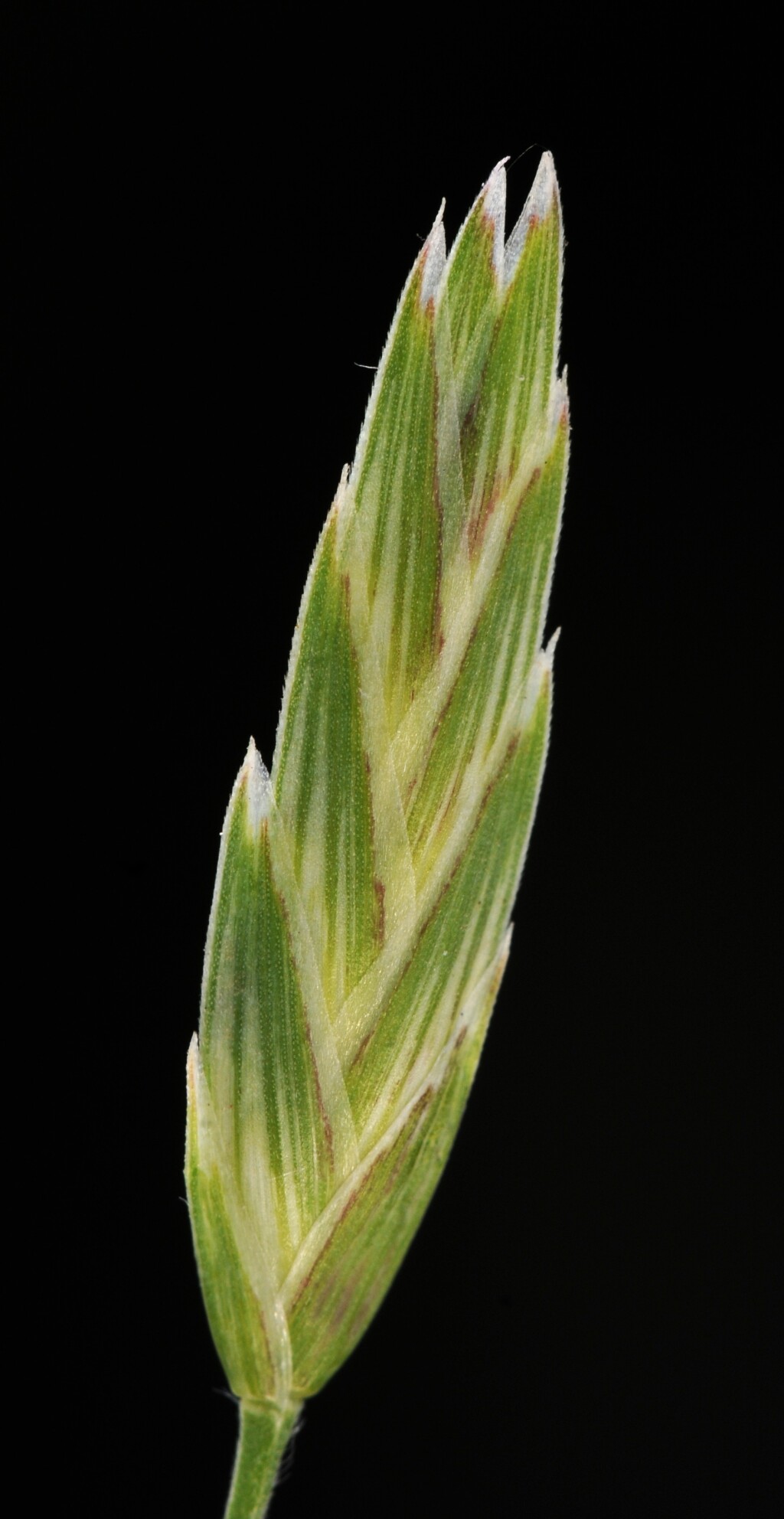Bromus catharticus var. rupestris
(Speg.) Planchuelo & P.M.PetersonCulms erect, to c. 60 cm high. Leaves pilose; blade flat or folded, to 25 cm long and 5 mm wide; ligule 2–3 mm long. Inflorescence a narrow, contracted panicle with branches more or less appressed to axis, 10–15 cm long. Spikelets 10–20(–24) mm long, 5–6.5 mm wide (when fully expanded, but prior to breaking up at maturity); lower glume 5–11 mm long, upper glume 6–12 mm long; lemma 7–15 mm long, smooth or minutely scabrous along keel, otherwise glabrous (in our specimens, but described as sometimes sparsely pilose); awn absent or rudimentary (to 1 mm long).. Flowers Oct.–Dec. (3 records).
VVP, GipP, OtP. Apparently rare in Victoria, the few collections (Avalon near Geelong, Coode Is near the mouth of the Yarra River) suggesting a preference for slightly saline situations, but also collected from a local park in Brighton, where growing in occasionally-mown lawn. Native to Argentina. Also naturalised NSW, Tas.
Of the 3 varieties of B. catharticus, this is the smallest in stature and in spikelet length. It has relatively broader spikelets than the other varieties and consistently pilose leaves.
 Spinning
Spinning